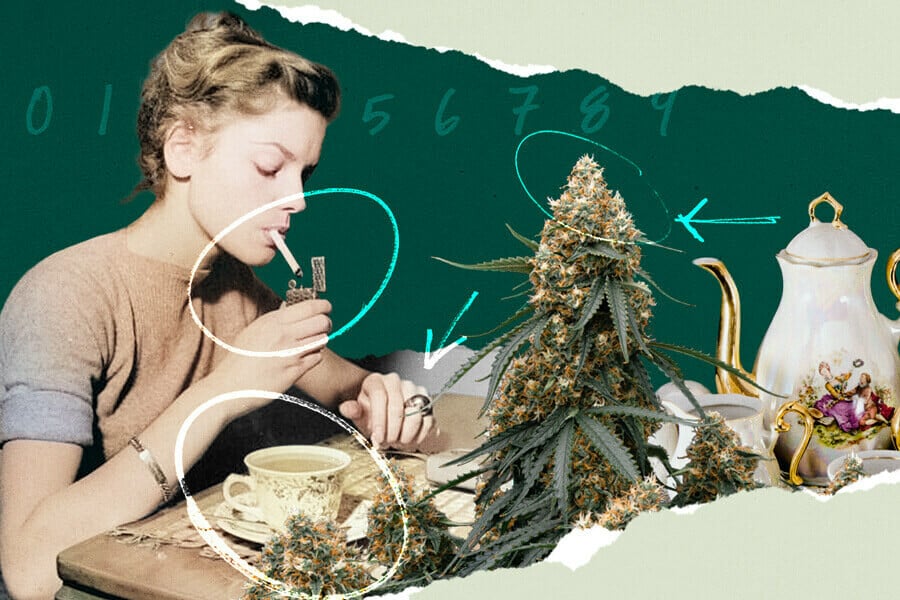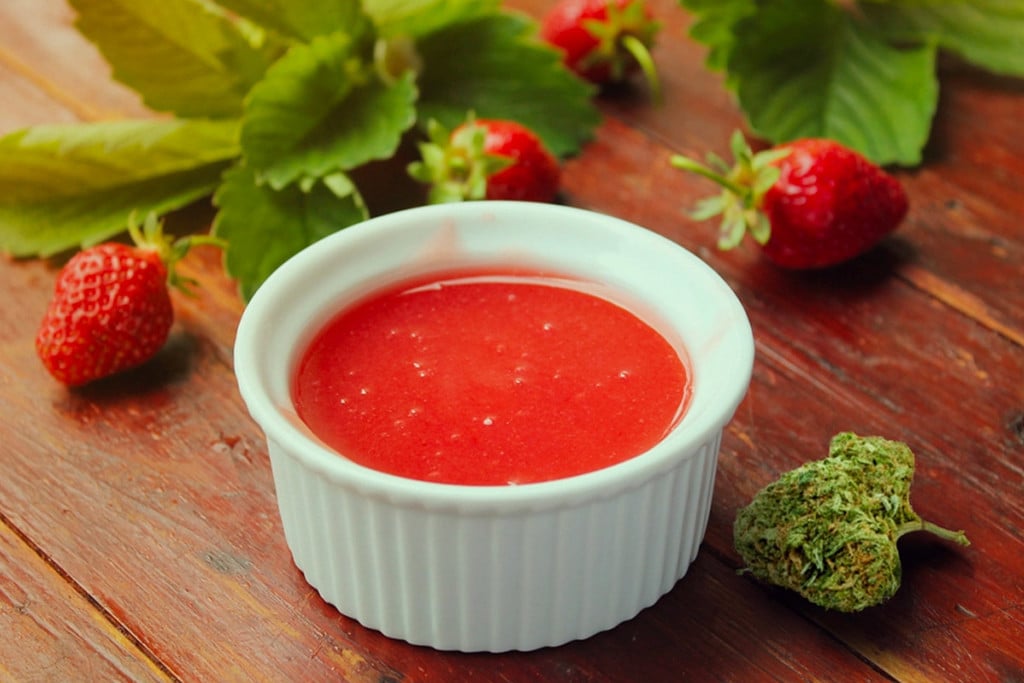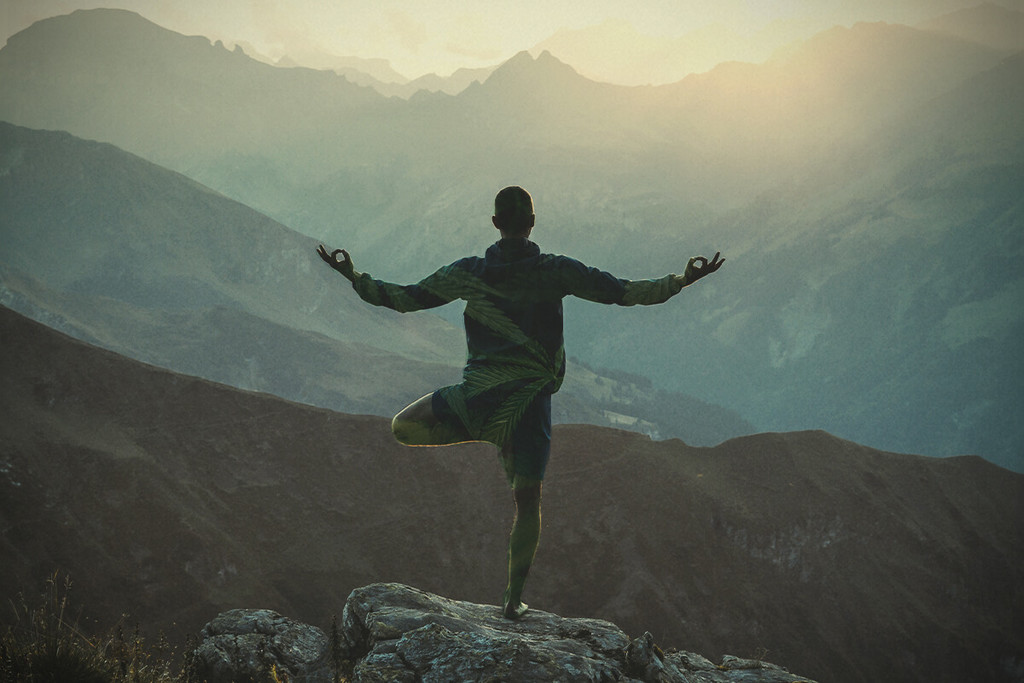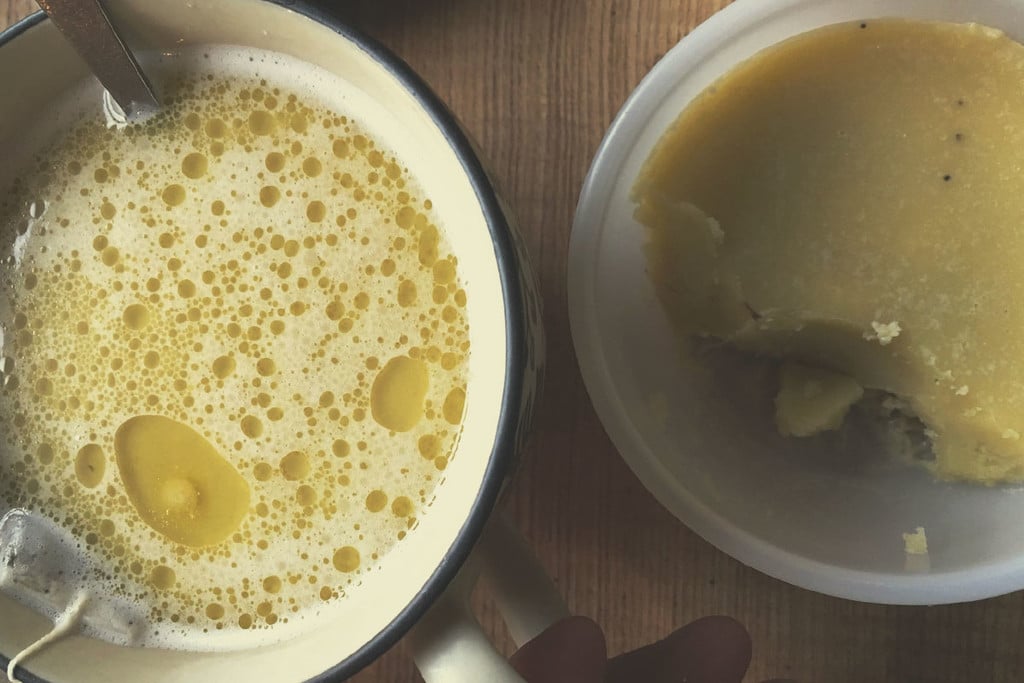.
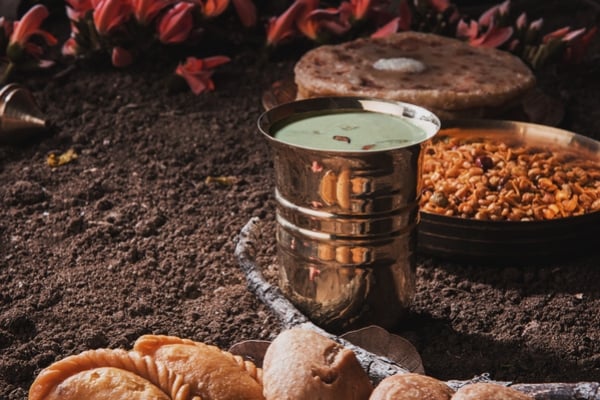
What Is Bhang and How Is It Made?
Bhang is a cannabis preparation most commonly consumed as “bhang thandai”—a drink mixing warm milk, ground nuts, and spices with a paste made from the flowers and leaves of the female cannabis plant. Packing a real THC punch, bhang was traditionally drunk during Hindu festivals and is still widely enjoyed today in Indian culture.
Contents:
Bhang is considered one of the most time-honoured, traditional forms of marijuana edibles. It is a favoured way of consuming cannabis throughout Northern India and is an essential part of Hindu culture.
What Is Bhang?
Bhang is a paste made from the flowers and leaves of the female cannabis plant. The paste is made by soaking and then grinding up the plant material. Traditionally, the paste is rolled into smooth, green or brown shiny balls known as bhang goli.
The most common use for bhang is in a drink known as bhang thandai. Bhang thandai also contains warm milk, ground nuts, and a mixture of spices. The beverage is typically consumed during religious festivals such as Holi. Bhang is a significant part of Hindu culture because of its link to Shiva, the god of destruction. Destruction is not viewed negatively in Hinduism, as through destruction, new life is created.
There are many stories about Shiva in the Hindu religion. One tells of how he descended from the Hindu Kush mountain range, bringing bhang as a gift to humanity. The stories speak of Shiva using bhang daily to enhance his powers. Shiva is sometimes also referred to as the “Lord of Bhang”.
Using bhang is a socially acceptable and pretty unremarkable practice in India. Its use is so widespread that following the colonisation of India in the 19th century, the British decided not to prohibit it for fear of extreme civil unrest. The consumption of bhang continues today, and it can still be purchased in government-sanctioned shops.
-
Traditional Uses of Bhang
Cannabis is named one of five sacred plants mentioned in the Atharva Veda. This is an ancient Hindu text originating from 2000–1400 BCE. Bhang has also been a prominent feature in Ayurvedic medicine for thousands of years. The Hindu-faithful believe that bhang can bring comfort from many complaints.
Aside from this, Hindu holy men, known as sadhus, use bhang to assist in meditation and yogic practice. Anxious soldiers were also known to use bhang to ease their nerves before battle. Legend says that bhang gave one nervous soldier enough courage to slide beneath an armed elephant and kill it during one victorious fight. Bhang was also regarded as a powerful aphrodisiac, often used by newlyweds on their first night of marriage.
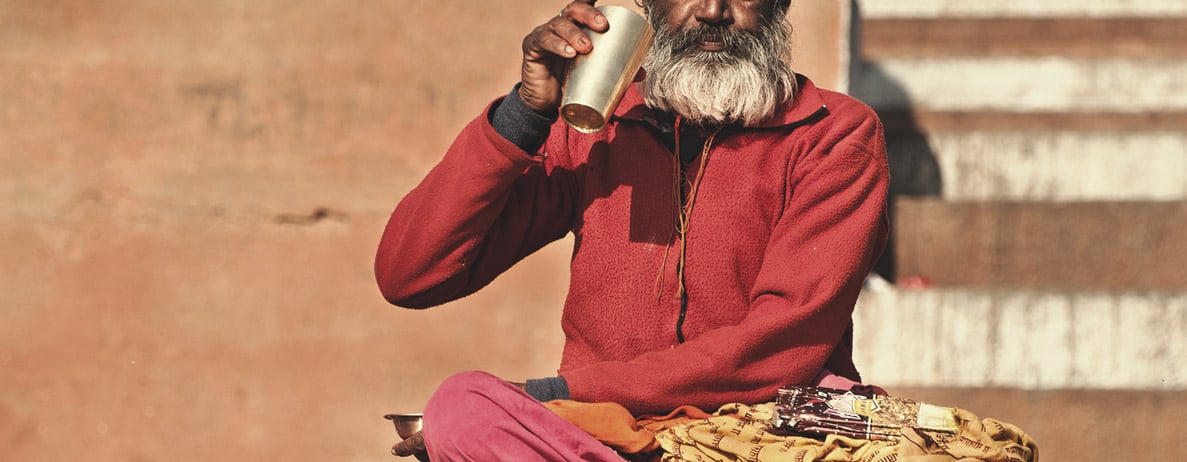
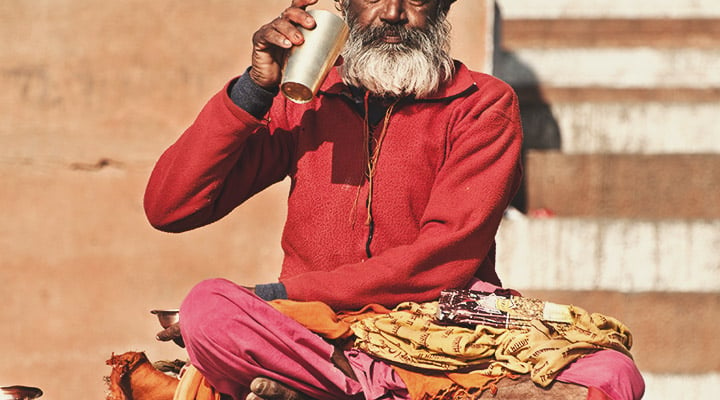
Bhang and Charas: What's the Difference?
Another type of traditional Indian cannabis extract is charas, which comes from the Hindustani word for “hash”. Charas is popular in Pakistan, Afghanistan, and Nepal, but is most often associated with India. Like bhang, charas has been used for religious and holistic purposes for thousands of years. So, what is the difference between bhang and charas?
Charas is traditionally made from the top leaves and flowers of the unfertilised young female cannabis plant. It is collected by rubbing the buds and leaves between the hands until resin accumulates. The resin is then scraped off and collected. Charas can also be confused with hash. However, like bhang, charas is made from a live cannabis plant. Hash is made from dead, dried cannabis plant material.
Producing charas is now illegal in India. However, it is still considered an essential cash crop in the Himalayan region of Northern India. Charas, unlike bhang, is not edible. Smoking is the recommended way to enjoy it. The potent THC cannabinoids will activate during the smoking/vaporising process.
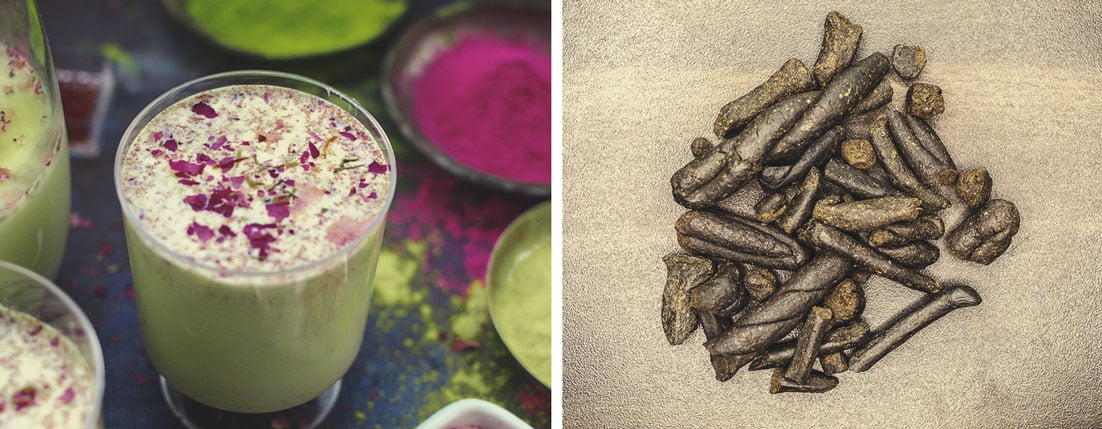
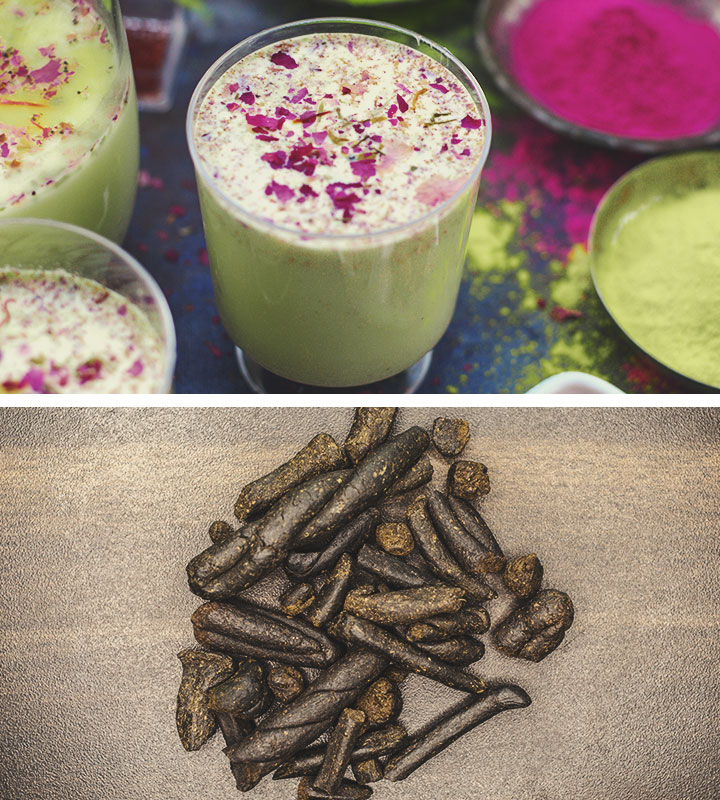
The Benefits and Risks of Bhang
Bhang is known for its psychoactive effects. The THC and other cannabinoids within the preparation bind to your body's cannabinoid receptors, impacting a host of functions and producing a pleasant, often euphoric high. As bhang is an "edible", a large share of the THC consumed is turned into 11-hydroxy-THC when exposed to first pass metabolism (i.e. when subjected to the digestive system and liver before entering the bloodstream).
As 11-hydroxy-THC is much more psychoactive than delta-9-THC, it results in an often much more powerful and sustained high. Whereas the effects of smoking last a few hours, those of bhang can last up to eight hours or more depending on the potency and the amount taken.
Although bhang has long held a place in the Ayurvedic lifestyle system, there is inadequate science to support claims of potential health benefits.
Though it may have some benefits, bhang also carries the potential for side effects. Yet, its impact isn’t much different to that of other cannabis edibles. In other words, you may experience panic[1] or fear as a result of ingesting bhang, and it is likely to reduce short-term memory, coordination, and judgment while you're intoxicated.
Consuming bhang while pregnant or breastfeeding can increase the risk of premature birth[2], low birth weight, and poor brain development. Therefore, use is strongly discouraged during these periods. Moreover, children and adolescents should avoid using bhang as it may negatively modify brain development.
Recipe for Traditional Bhang Thandai (Serves 2)
If you do want to make bhang thandai at home, however, it is a simple process that requires only a few essential pieces of equipment. It makes for a tasty, refreshing, and alternative way to enjoy your weed.
Equipment
- Large saucepan and lid
- Pestle and mortar
- Cheesecloth or fine grade mesh filter
Ingredients
- ½ – 1 ounce (14–28 grams) fresh cannabis flowers and leaves
- 500ml fresh water
- 500ml whole fat milk
- 250ml honey
- 2 tbsp ground almonds
- ¼ tsp ground ginger
- ¼ tsp ground fennel seeds
- ¼ tsp garam masala
- ¼ tsp ground black pepper
- ½ tsp cardamom
- ½ – 1 tsp rosewater
- Small handful of chopped pistachios—optional
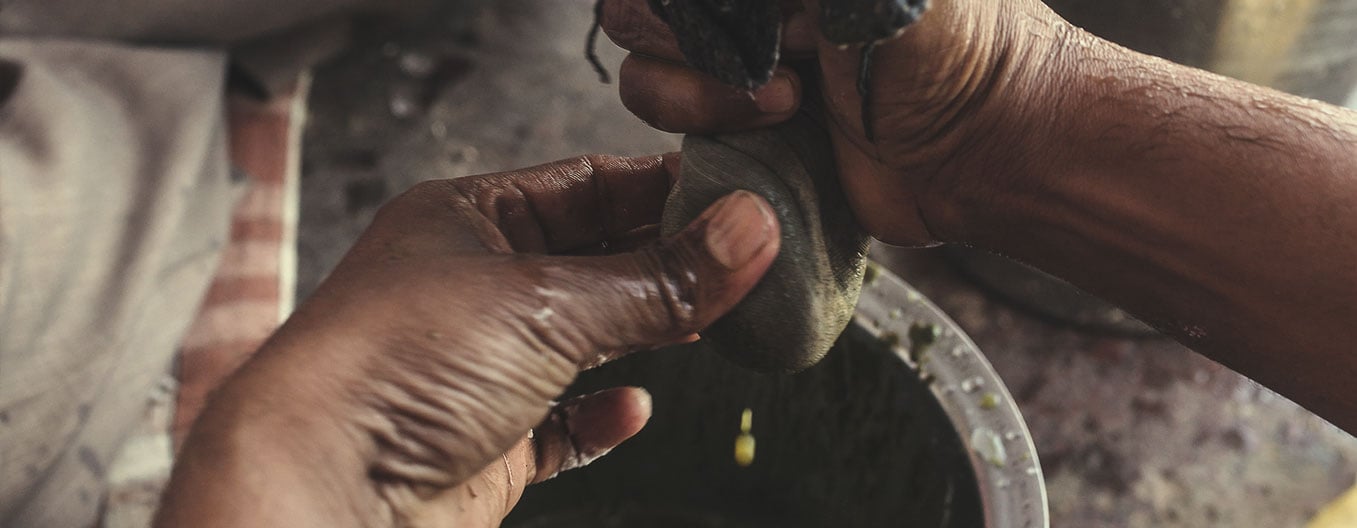
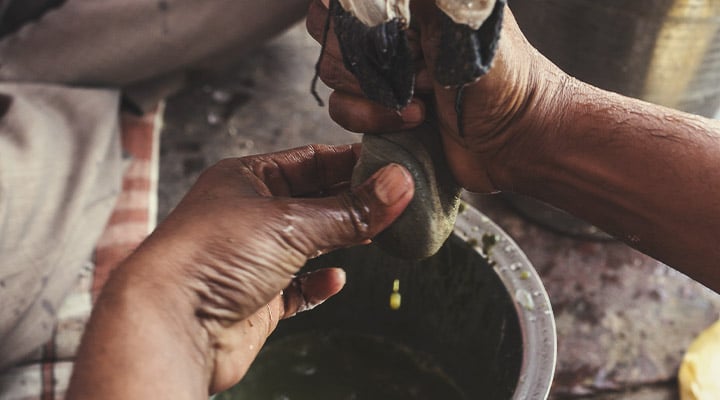
Directions
- Bring the water to a boil on your stovetop.
- Finely chop your plant material, add it to the boiling water, and remove the pan from the heat.
- Cover the pan, leaving the mixture to soak for approximately 10 minutes.
- Use the cheesecloth to strain the mixture. Set both the cannabis and the water to one side.
- Warm the milk in the pan on the stove.
- Put the cannabis in your mortar and pestle with several teaspoons of warmed milk and begin grinding it into a paste.
- Add more milk, a few teaspoons at a time, grinding as you go. Continue this process until you have used half the milk.
- Strain any remaining plant material from the milk and set the liquid to one side.
- Now, combine the water and the milk, and stir well.
- Add the remaining milk and other ingredients, stirring well between each application.
- Chill for 30 minutes in the refrigerator and stir well before serving. Garnish with chopped pistachios if desired.
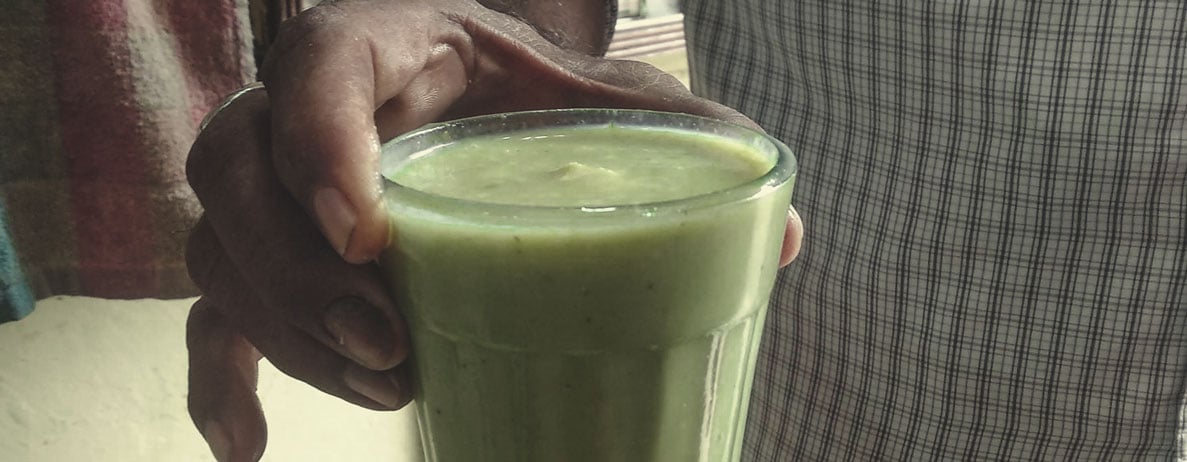
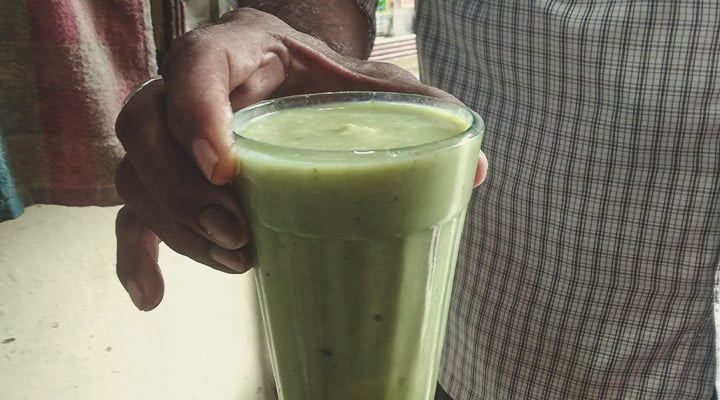
Tips for Better Bhang
Bhang was created to be consumed fresh. As such, we would not recommend storing it for longer than one day, refrigerated or not. Ideally, make it when required so that you can get all of its benefits before any degradation of ingredients occurs.
A good bhang recipe requires fresh cannabis leaves and flowers. It is an ideal way to use your unwanted fan leaves and trim if you grow your own plants. You can use dried and cured cannabis, but getting the paste the right consistency will be more challenging. Using dried bud can also result in your bhang thandai being more potent. So if you are using dried material, remember to adjust the quantity accordingly.
Cannabinoids are fat-soluble. This means that more THC and CBD will be absorbed into your drink if you use a liquid with a high fat content. This is why making your bhang thandai with full fat milk from cows or goats is essential. Add a spoonful of cream, butter, or yoghurt to your finished mixture to increase the fat content further.
Vegans can use plant-based milk, but the results may not be as potent. A milk with a higher-than-average fat content, such as coconut milk, will give you the best results. Add coconut oil at the end of the process to increase the fat content and absorption potential.
Is Bhang for Me?
If you have ever tried cannabis edibles, you will understand that consuming THC in this way has powerful effects. Bhang can take anywhere up to two hours to kick in. When it does, the resulting high is more intense and long-lasting than what you can achieve through smoking or vaping.
Therefore, it is wise to exercise caution when drinking bhang. Start with a small amount. Once you know the strength and the effects, you can alter the dose to suit. Remember that not all ingestion forms serve everyone. The key to getting the most out of your cannabis experience is finding the correct delivery method for you.
- Marijuana Toxicity https://www.ncbi.nlm.nih.gov
- Prenatal exposure to cannabis and maternal and child health outcomes: a systematic review and meta-analysis https://pubmed.ncbi.nlm.nih.gov


























